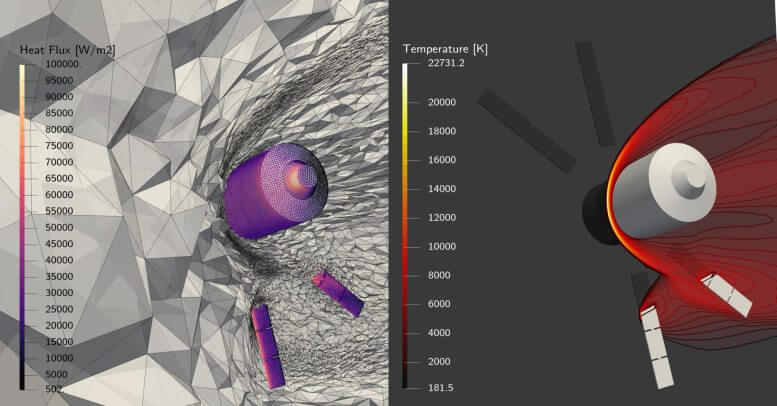Italian researchers studied for the European Space Agency what is the best way to cause a spacecraft or satellite that has ended its life to burn up completely in the atmosphere

This simulation of the re-entry of the European Space Agency's (ESA) ATV (Automated Transfer Vehicle) supply spacecraft into Earth's atmosphere begins by representing the spacecraft's environment as a three-dimensional cloud of connected points, known as a "computational mesh." This is part of the process of modeling the supersonic movement of gases around the falling spacecraft using "computational fluid dynamics". Figure: European Space Agency.
This ATV disposal research was conducted as part of the European Space Agency's Open Platform for Space Innovation MIDGARD (Interdisciplinary Modeling of the Aerothermodynamic Dispersion of Reentrant Bodies) activity with the University of Strathclyde's Department of Mechanical and Aeronautical Engineering. The goal of this ongoing activity is to reduce the uncertainty of the simulation of destructive entry into the atmosphere by combining highly accurate but expensive imaging methods and less reliable but fast methods.
Five ATVs brought supplies to the International Space Station between 2008 and 2015, all of which were disposed of by atmospheric re-entry. Europe's largest spacecraft leaves a longer legacy as the base for the European Service Cell of NASA and ESA's Orion spacecraft, which is designed to return astronauts to the Moon and is scheduled to fly on NASA's first Artemis mission later this year.

Fabio Morgado of the University of Strathclyde, who works on MIDGARD, says: "Treating the danger of space debris re-entering the atmosphere is becoming progressively more urgent due to the increase in the number of orbiting objects and the resulting higher frequency of re-entries. The prediction of the re-entry process is affected by the atomization and advanced thermal erosion of the re-entering objects due to the strong aerothermal loads".
Prof. Marco Pusati, MIDGARD principal investigator and director of Fabio, adds: "Improving the modeling and visualization of the dispersal due to aerothermodynamics is extremely important to design systems for safe disposal and to assess the associated hazards of ground impact."
An event in Bordeaux, France, at the end of October brought together experts in the "aerothermodynamics" of re-entry and also in "disposal planning" - the practice of designing space equipment in such a way as to increase the likelihood that it will burn up completely in the atmosphere, and that no components will survive to the ground.
In the past, heavy components such as propellant tanks or instrument optical racks have reached the ground intact, but redesigning systems to use lighter parts or to make them more likely to disintegrate earlier on reentry can reduce the danger.
More of the topic in Hayadan:

One response
The subject was presented without saying anything significant about it - perhaps except for the surprising fact that such objects sometimes survive entry into the atmosphere and reach the ground